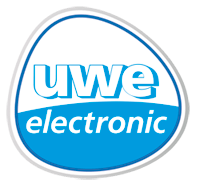
General specifications:
- Max. working temperature of heaters for polyester: 100°C (with adhesive: 100°C)
- Max. working temperature of heaters for silicone: 200°C (with adhesive: 175 °C )
- Max. working temperature of heaters for kapton: 200°C (with adhesive: 175°C )
- Max. working temperature of heaters for mica: 590°C
- max stress allowed on the connecting cables ( axial direction ): 10 kg
- max pressure allowed on the heating surface 6 kg/cm2
- concentrated pressures on the heating surface are not permitted
- min bending radius 10 mm for silicone, mylar and kapton
- In applications where liquid must be heated, the thermostat ( if any ) must be placed in the zone which can first stay without liquid because of consumption, leakage or evaporation.
Heater with adhesive:
- the quality of the adhesive is guaranteed for 6 months if the heaters are kept at 20°C and max 50% of humidity. In different conditions ( however not exceeding 30% of the former values), the heating elements should be kept in a room for minimum 72 hours at 20°C and max 50°C of relative humidity.
- while applying the adhesive, the surface temperature must exceed 10°C in order to allow the glueing. In normal temperature conditions, the adhesive reaches its highest performance after 70/80 hours from gluing.
Heating element applications:
- Be careful not to damage the surface with sharp objects
- Clean and degrease the surface where the heating element will be applied. If liquid degreasers are used, make sure the surface is dry before proceeding with the application of the heating foil. If necessary, the correct cleaning of the surface can be checked by running a water drop and verifying that its shape is not spherical but flattened.
- place the heating element for its final application
- peel off 2-3 cm of the protective paper on the opposite side of the connections.
- Glue this part to the surface using a rubber roll or a plastic spatula
- Carry on gradually up to the finishing of this operation making sure that no air bubbles are left underneath.
- The pressure on the roll (or on the spatula) has to allow the leakage of air bubble, if any, left between the foil and the surface.
PDF-Version for download and print






